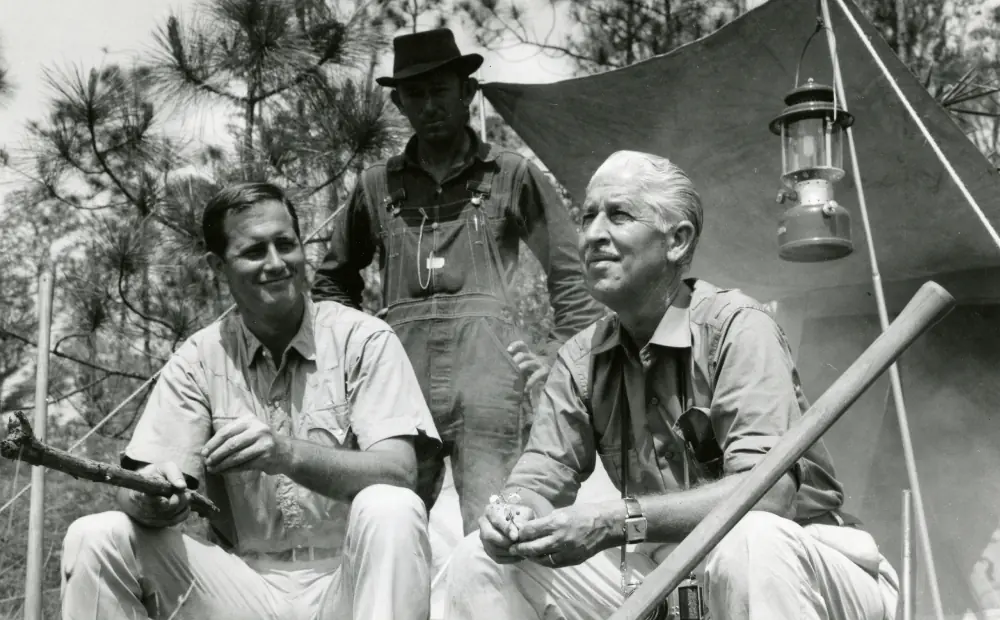0:04
The Baja California peninsula in Mexico, a land of dramatic contrasts where rugged desert spills into the turquoise waters of the Pacific Ocean.
0:15
This is a pretty cool way to see this part of Mexico.
0:19
We're flying into the El Biscayeno Biosphere Reserve, the largest Wildlife Refuge in Latin America.
0:26
We're getting pretty close in this tiny little plane, and I think within like a couple of hours, you and me will be on a boat looking for some baby whales.
0:37
That's right, baby whales.
0:40
Just beyond this dusty landing strip is a unique lagoon, a critical habitat for a diverse array of marine mammals, sea turtles and birds, and one of only three places on Earth where eastern Pacific Gray whales come to give birth.
0:58
We are in the San Ignacio Lagoon in Baja California, Sir, Mexico, and we traveled here, but we're looking for gray whales who traveled here from even further of a distance all the way from Alaska down through the Pacific right to this lagoon in order to give birth to their calves.
1:16
The main feature that we believe is the most attractive to the whales is the fact they're protected waters into the lagoons, guarded by barrier sand islands, which cut down on the surf and the currents and also keeps the predators out.
1:27
Their number one predator of the orca is right outside, but they rarely come into the lagoons.
1:32
We boarded small boats called Panga alongside Carlos Ghana, a wildlife videographer who works with the gray whale researchers here at the reserve.
1:44
How far do we have to travel to get to the whale?
1:46
It's about 25 minutes from here to the observation area.
1:50
This whole place is a biosphere, and there's only a designated area where you can interact with the whales if they choose us to engage.
1:59
Do you think the whales have learned this is a protected area?
2:03
I'd like to think so.
2:04
You'll see they come to you on their own accord.
2:07
All right, Carlos.
2:10
So I'm really curious if they bring their babies, their newborn babies to, oh, look right here, right here, look as interrupted by the whale.
2:23
Look at the size of this whale.
2:27
The Eastern Pacific Gray whale was haunted nearly to extinction from the mid 1800s to early 1900s.
2:33
That's why hop, spy, hop right there, right there, right there behind us.
2:38
He's staying up and he's just staying up.
2:43
But today they are no longer endangered.
2:45
Whales were haunted primarily for their oil.
2:48
This is pre petroleum civilization.
2:51
The oil is used for lighting, is used for making candles, was used for industrial purposes due to the discovery of petroleum which made whale oil less useful, protection by international whaling bands and the conservation of sanctuaries like this one.
3:07
This resilient species has made an incredible recovery.
3:11
There's no one chasing them, there's no one harassing them, so the boats are not a threat.
3:15
The last time whales were killed here by commercial whalers was over 100 years ago, and they don't live to be that long.
3:21
So we think we have a generation of whales here that are not intimidated by small boats.
3:26
We're just floating here.
3:28
And when a whale decides there's one right there, if that well decides, you know what?
3:34
I want to go hang out with them because it's going to beeline to us.
3:37
Right.
3:37
And let us engage.
3:39
Yeah.
3:39
We're not chasing.
3:40
I call it being kind of right here.
3:44
Look at this one.
3:57
Oh, hello.
3:58
It's nice to meet you.
4:02
We just had a face.
4:02
What an experience.
4:04
My gosh, no way.
4:10
It was soft.
4:11
It was a little slick, a little, and it came and pushed back up.
4:16
We've been near other species of whales before where it's important not to touch, but this species of gray whales and in this lagoon, research says that it's actually totally fine as long as they come to you and rise up next to into your hand.
4:31
I mean, that tells me they want to do it.
4:36
We were also approached by a mom and her inquisitive calf.
4:40
Oh, and there it is with its mom.
4:42
Look at that interaction very well.
4:46
Calf is born.
4:47
It's usually averages around 4 1/2 to 5 meters long.
4:51
Its mom is usually 12 to 15 meters long.
4:53
At maturity.
4:54
They weigh close to 1010 1/2.
4:56
The females need to come down and have that birth take place in an area that's conducive to a warm blooded air breathing youngster if they're to give birth higher latitudes.
5:05
It's cold, it's dark, it's icy and it's not good for the survivorship of the cows.
5:09
It's a big baby.
5:12
That is a large baby.
5:16
Since ocean waters offer limited visibility, a young whale might never fully see all of its nearly 50 foot long mother, so touch is essential.
5:27
Oh, she's right down there.
5:28
She's right with that.
5:29
Oh, right here.
5:29
Oh my gosh.
5:41
Watch your hand, little one.
5:43
Watch your hand, sweetie.
5:44
Watch your hand.
5:45
Oh my God.












